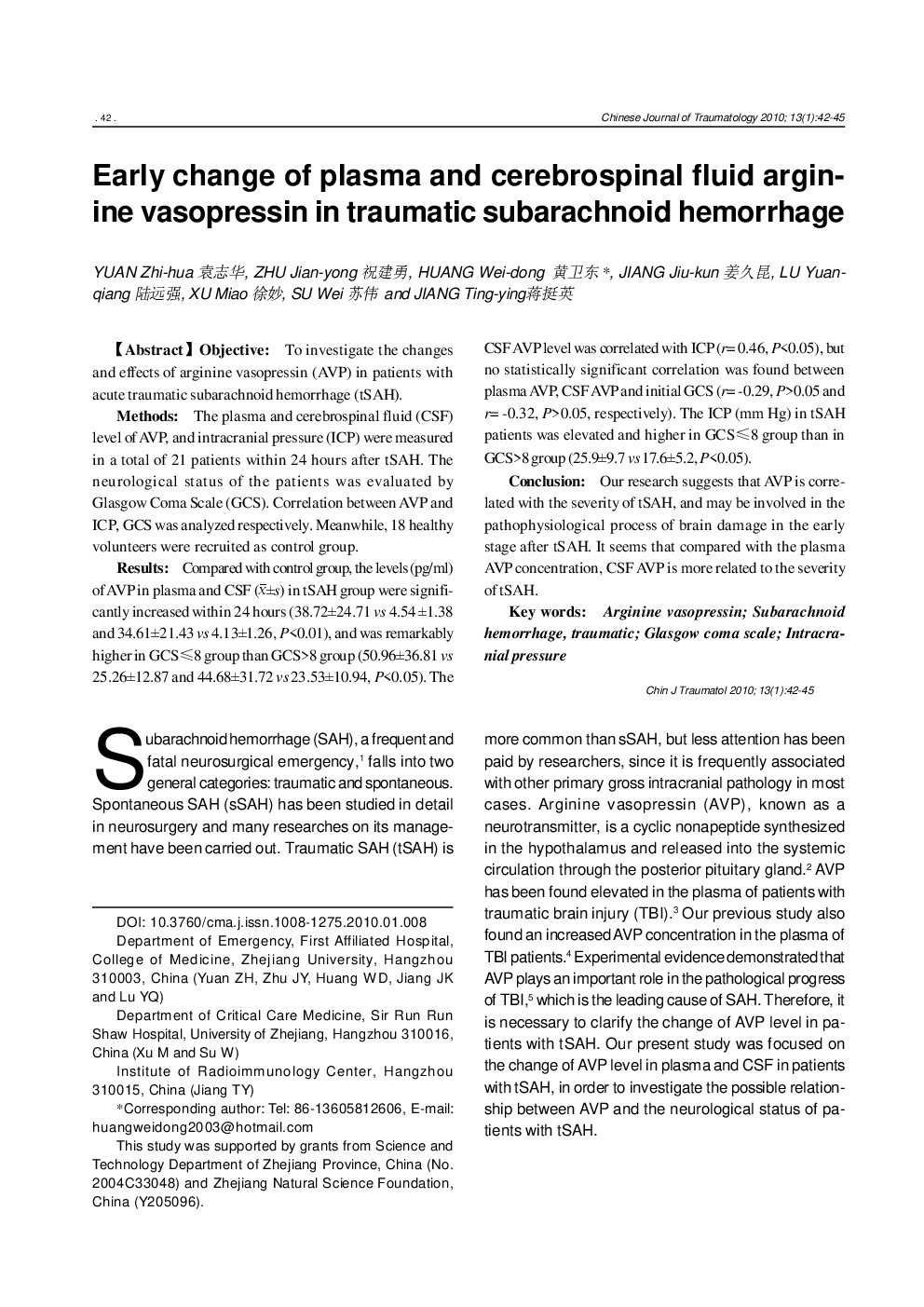| Article ID | Journal | Published Year | Pages | File Type |
|---|---|---|---|---|
| 3107692 | Chinese Journal of Traumatology | 2010 | 4 Pages |
ObjectiveTo investigate the changes and effects of arginine vasopressin (AVP) in patients with acute traumatic subarachnoid hemorrhage (tSAH).MethodsThe plasma and cerebrospinal fluid (CSF) level of AVP, and intracranial pressure (ICP) were measured in a total of 21 patients within 24 hours after tSAH. The neurological status of the patients was evaluated by Glasgow Coma Scale (GCS). Correlation between AVP and ICP, GCS was analyzed respectively. Meanwhile, 18 healthy volunteers were recruited as control group.ResultsCompared with control group, the levels (pg/ml) of AVP in plasma and CSF (x±s) in tSAH group were significantly increased within 24 hours (38.72±24.71 vs 4.54±1.38 and 34.61±21.43 vs 4.13±1.26, P <0.01), and was remarkably higher in GCS≤8 group than GCS>8 group (50.96±36.81 vs 25.26±12.87 and 44.68±31.72 vs 23.53±10.94, P 0.05). The CSF AVP level was correlated with ICP (r = 0.46, P<0.05), but no statistically significant correlation was found between plasma AVP, CSF AVP and initial GCS (r = −0.29, P>0.05 and r= −0.32, P>0.05, respectively). The ICP (mm Hg) in tSAH patients was elevated and higher in GCS=8 group than in GCS≤8 gro up (25.9±9.7 vs 17 .6±5.2, P<0. 05).ConclusionOur research suggests that AVP is correlated with the severity of tSAH, and may be involved in the pathophysiological process of brain damage in the early stage after tSAH. It seems that compared with the plasma AVP concentration, CSF AVP is more related to the severity of tSAH.
